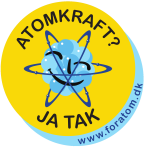A nuclear power plant can produce three types of waste. It is classified according to how radioactive it is [1].
Low-Level Radioactive Waste (LLW)

Out of the total radioactive waste, LLW makes up 90% of the amount produced but only 1% of the total radioactivity; it includes everything from papers, discarded valves, pumps, used filters, work clothes and tools, etc.
Intermediate radioactive waste (ILW)

Of the total radioactive waste, ILW makes up 7% of the amount produced but only 4% of the total radioactivity.
It requires some shielding but decays well enough over time.
High-level radioactive waste (HLW): Spent fuel

Out of the total radioactive waste, HLW constitutes only 3% of the amount produced but 95% of the total radioactivity.
It consists of irradiated or spent nuclear reactor fuel. This is the same fuel we put fresh into the reactor: the solid form of small fuel pellets in long metal tubes called rods. A structured group of fuel rods is called a fuel assembly. Not a green liquid mass like in The Simpsons.
Source:




